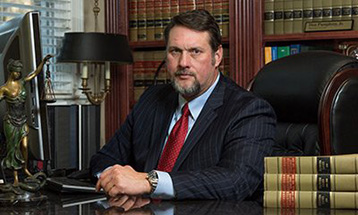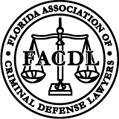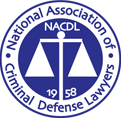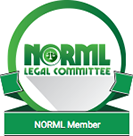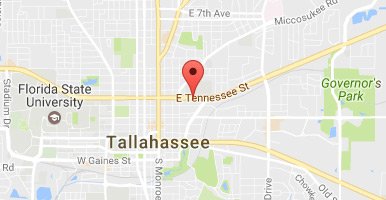- DUI
- Criminal Defense
- Florida DUI
- Traffic Offenses
- Drug Charges
- Marijuana Charges
- Violent Crimes
- Domestic Violence
- Temporary Injunctions
- Weapons Charges
- Theft Crimes
- White Collar Crime
- Juvenile Offenses
- Sex Crimes
- Violation of Probation
- Early Termination of Probation
- Seal or Expunge Criminal Record
- Criminal Appeals
- US Federal Offenses
- Misdemeanor Charges
- Felony Charges
- Co-Defendant Cases
- College Student Defense
- College Student Hearings
- FSU Students
- FAMU Students
- Florida Panhandle Arrests
- Extradition to Florida
- Bench Warrants / Warrants
- Emergency Bond Hearings
- Gambling Charges
- Drone Arrests
- Marsy’s Law
- UAS Infractions
- Introduction of Contraband
- Lying to Police
- Locations
- Case Results
- Our Firm
- Media
- Resources
- Blog
- Contact Us
What is Hearsay-Within-Hearsay in Florida?
July 7, 2025 Don Pumphrey, Jr. Criminal Defense Social Share
In Florida, hearsay is defined as an out of court statement offered in court to prove the truth of the matter asserted in the statement. Hearsay is generally inadmissible in court, unless it satisfies particular conditions required by Florida’s Rules of Evidence.
But sometimes, a hearsay statement will be layered within another hearsay statement. This is called “hearsay-within-hearsay” (or double hearsay), and it remains admissible in Florida courts as long as every layer of the statement falls under a designated hearsay exception (Fla. Stat. Section 90.805).
This article will explore the concept of hearsay-within-hearsay, provide examples of admissible and inadmissible hearsay-within-hearsay, and discuss this in the context of Florida’s hearsay exceptions.
Under Fla. Stat. Section 90.803 (hearsay exceptions for witnesses regardless of availability) and 90.804 (hearsay exceptions for unavailable witnesses), there are various “exceptions” to the general rule of excluding hearsay at trial.
These exceptions include:
- Present Sense Impression: Statement describing or explaining an event made while perceiving it or immediately after.
- Excited Utterance: Statement relating to a startling event made while under stress or excitement from the event.
- Then-Existing Mental, Emotional, or Physical Condition: Statement of current state of mind, emotion, sensation, or physical condition (e.g., intent, pain).
- Statements for Purposes of Medical Diagnosis or Treatment: Statement made for diagnosis/treatment describing medical history, symptoms, or cause.
- Recorded Recollection: A record made or adopted by the witness when memory was fresh, now insufficiently remembered.
- Records of Regularly Conducted Business Activity: Business records made near the time by someone with knowledge, as part of a routine practice.
- Child Hearsay: Out-of-court statements of a child with a physical or developmental age 17 or younger describing sexual abuse or physical abuse, admissible if trustworthy and child is either available for cross or unavailable with corroboration.
- Statement Under Belief of Imminent Death: Statement made while believing death was imminent, concerning the cause or circumstances of what the declarant believed to be impending death. (Death must be so close that the declarant proverbially heard “the beating wings of the angel of death.” People v. Sarzano, 212 N.Y. 231 (1914))
Most of the time, out of court statements will consist of only one layer of hearsay. Examples of a standard hearsay statement include:
- “Sarah told me the defendant ran a red light.”
- “The defendant told me he was in a lot of pain.”
- “Andrew told me that the defendant had a gun.”
By contrast, hearsay-within-hearsay (multiple layers of hearsay) may include statements such as:
- “Tom told me that Linda said the defendant had a knife.”
- “The police report says the witness stated that the suspect confessed to the crime.”
- “The defendant’s cousin told me the defendant said he was just borrowing the car.”
Despite its potential lack of reliability, hearsay-within-hearsay is not barred from introduction at trial. Florida’s courts have consistently held that for hearsay-within-hearsay to be admissible under Fla. Stat. Section 90.805, each layer of the statement must independently satisfy one of Florida’s designated hearsay exceptions. Henderson v. State, 135 So.3d 472 (Fla 2d. DCA 2014)
In the context of evaluating a hearsay-within-hearsay (such as “Tom told me that Linda said the defendant had a knife”), the courts must separately determine whether:
- Tom’s statement to the witness qualifies under a hearsay exception
- Linda’s statement to Tom qualifies under a hearsay exception
If just one of these statements (layers) is found not to satisfy Florida’s hearsay requirements under 90.803 and 90.804, the “hearsay-within-hearsay” must be excluded under 90.805. Harris v. Game and Fresh Water Fish Com’n, 495 So.2d 806 (Fla. 1st DCA 1986)
An example of an admissible hearsay-within-hearsay statement may include the following:
- A hospital record is introduced at trial that reads: “Patient states – I was hit and injured by a red Toyota driven by an elderly man with gray hair.”
In this example, the “outer” layer of hearsay is the hospital record itself. Under the business records exception (Fla. Stat. Section 90.803(6)), medical records that are properly authenticated and created in the regular course of business are admissible in a court of law. Love v. Garcia, 634 So. 2d 158 (Fla. 1994)
Because the “outer” layer of hearsay is admissible, the “inner” layer of hearsay must also be admissible before the exhibit can be admitted as substantive evidence. In this example, the “inner layer” is the patient’s disclosure of his injury to the medical staff (which happens to also contain evidence of the driver’s guilt).
The patient’s statement is independently admissible under Fla. Stat. Section 90.803(4) – as it is a statement for the purpose of medical diagnosis or treatment. Thus, the medical record containing the patient’s statement may be admitted at trial as evidence against the driver, as both layers of hearsay complies with a designated hearsay exception.
By contrast, the following example would fail to qualify as admissible hearsay-within-hearsay:
- A company email from Joe Smith reads: “Jane told me she heard from Lisa that the defendant was embezzling funds.”
In this hypothetical, the “outer” layer is the email itself. Though emails may sometimes be admissible under the business records exception (90.803(6)), this is unlikely to be the case unless the business regularly relies on such emails for reporting misconduct. A core component of the business records exception is that the records must be created and maintained in the regular course of business. State v. Belvin, 986 So.2d 516, 522 (Fla. 2008)
But even if Joe’s email was considered a business record, Jane’s statement to Joe and Lisa’s statement to Jane do not fall under any designated hearsay exceptions in Florida. This makes the statement inadmissible, as each layer of hearsay-within-hearsay must qualify for admission. At least two (and likely all three) layers in this example do not.
The question of whether hearsay-within-hearsay is admissible is also complicated by the fact that there are two types of hearsay – testimonial and nontestimonial. In Crawford v. Washington, 541 U.S. 36 (2004), the U.S. Supreme Court ruled that all testimonial hearsay statements require one of the following before they can be admitted in court:
- The declarant (speaker of the statement) must testify at trial and be cross-examined by the defendant
- The declarant is unavailable to testify at trial – but the defendant has had the prior opportunity to cross-examine them
Under Crawford, testimonial hearsay is defined as an out of court statement made with the primary purpose of facilitating a law enforcement investigation or a future prosecution. By contrast, nontestimonial hearsay is considered an out of court statement that is made in response to an ongoing emergency. Id.
If a hearsay-within-hearsay statement is nontestimonial in nature and every layer of hearsay satisfies a designated exception, the statement is admissible in its entirety. But if certain layers of hearsay-within-hearsay are testimonial in nature, how does this impact the admissibility of the hearsay-within-hearsay statement?
The answer is – if one or more layers of a hearsay-within-hearsay statement is testimonial in nature, Crawford requires that the defendant have the opportunity to cross-examine the declarant (speaker) of that layer before the hearsay-within-hearsay is admitted. This typically will occur at trial, but in some cases, can occur during a 3.190(j) deposition.
If the party whom the hearsay-within-hearsay statement is being introduced against does not have the opportunity to cross-examine the declarant of the testimonial layer, the entire statement is inadmissible. This is the case even if the remaining layers comply with Florida’s hearsay exceptions under 90.803 and 90.804.
Examples of testimonial hearsay statements may include:
- A written affidavit or sworn statement to police
- A 911 call after an emergency ends identifying the suspect and details
- The contents of a forensic (CPT) interview conducted of a child victim (State v. Contreras, 979 So.2d 896 (Fla. 2008))
- Statements made during a police interrogation post-arrest
- Lab reports
Examples of nontestimonial hearsay statements may include:
- A 911 call during an active emergency (“He just fired shots at someone!”)
- Statements to a doctor for purposes of medical diagnosis and/or treatment
- Excited utterance to a bystander (“He just stabbed me!”)
- Business records created in the regular course of business
- Child abuse disclosures to a non-investigative source (such as relatives or teachers)
In sum, hearsay-within-hearsay involves hearsay statements layered within other hearsay statements. These “double hearsay” statements (or even triple/quadruple hearsay, depending on the circumstances) are considered admissible in court if every layer of the hearsay satisfied a designated Florida hearsay exception (90.803 and 90.804).
However, this is complicated if one or more layers of the hearsay-within-hearsay are considered testimonial in nature. Crawford requires that if this is the case, the declarant of that layer of the statement must testify (at trial or in a 3.190(j) deposition) – and the defendant must have the opportunity to cross-examine them. If this does not occur, the entire hearsay-within-hearsay statement is inadmissible.
If someone is arrested and formally charged in Florida in a case involving potential admission of hearsay, it is critical to find experienced and trusted legal representation as soon as possible. This decision could make the difference in whether or not someone faces a lengthy prison term and hefty fines.
Criminal Defense Attorney in Tallahassee, FL
Don Pumphrey, Jr. is a Former Prosecutor, Former State Police Officer, Lifetime Member of the Florida Association of Criminal Defense Lawyers; for over 25 years as a private defense attorney who is Trusted, Experienced, Aggressive in Criminal Defense as a Trial Attorney, Criminal Lawyer, Criminal Defense Lawyer for the accused in Florida State Courts located in Tallahassee, Florida but handling cases throughout the State of Florida.
Don Pumphrey, Jr. and the Tallahassee criminal defense lawyers at Pumphrey Law have decades of experience fighting drug charges on behalf of clients and winning. Call Pumphrey Law now at (850) 681-7777 to learn more about what we can do for you. Our lawyers will be happy to provide you with a free consultation.

